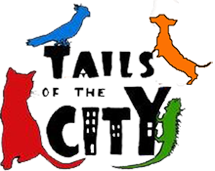?? Is your pet the cutest, scariest or silliest in his or her costume?…
Daylight Saving Time: How ‘Falling Back’ Can Mess With Your Dog’s Head
By DogsterNov 04, 2013
On Sunday morning it was time for us to “fall back,” adjusting our clocks one hour backward to segue out of Daylight Saving Time and back to Standard Time. Does that extra hour affect our pets? You bet it does.
Earlier this year we spoke with some experts about this, and although they addressed the “spring forward” change, the concepts are the same. They explained that dogs are creatures of habit, and they love consistency in their daily schedule. When the old familiar routine is disrupted, the change can affect a dog’s behavior.
Dogs have adjusted themselves to humans’ wacky behavior since the first wolf decided to let itself be domesticated. For the most part, they’re used to synchronizing their routine to ours; but sometimes, they could use a little help.
“If we start adjusting their schedule in 15-minute increments a few days before the time change, it makes the transition easier,” says William Berloni, author of Broadway Tails and director of behavior for the Humane Society of New York.
“We purposely never feed or walk our dogs at exactly the same time,” he explains. “It’s always slightly different: Dinner at 8 or 8:30 or 9, for instance. It’s roughly the same window of time, but not the exact same time every day. This slight variation keeps the dogs accustomed to their lives being somewhat unpredictable, so they don’t experience ‘jet lag’ and they’re always ready to go. It reduces stress on them and us.”
(Obviously, those of us who are self-employed have an easier time of this because we create our own schedules.)
“If you have a barky or reactive dog, prepare for a bit more of both on your first walk of the day,” says behavior expert Sarah Wilson, author of Dogology: What Your Relationship With Your Dog Says About You. “I just bring extra treats and proactively help my dog connect with me to help them through this temporary readjustment phase.”
Another helpful hint: Remember that wildlife and other animals also aren’t attuned, so conditions on your first several morning walks will necessarily be different. Certain things your dog is accustomed to seeing might not be there, and vice versa.
Of course, the one-hour time difference will almost certainly mean your dog is ready to “go” at what seems like the usual time, regardless of what the clock says. On Sunday, when it’s time to “fall back” to Standard Time, while we get that extra hour in bed, it means our dogs awaken at their usual time wanting to relieve themselves. Some dogs are nice enough to just snuggle in and let us sleep. But very young or very old dogs might not be able to hold it. Again, it’s the same drill: Don’t be surprised if a little accident happens while you’re enjoying that extra hour of snooze time. It’s not your dog’s fault.


This Post Has 0 Comments